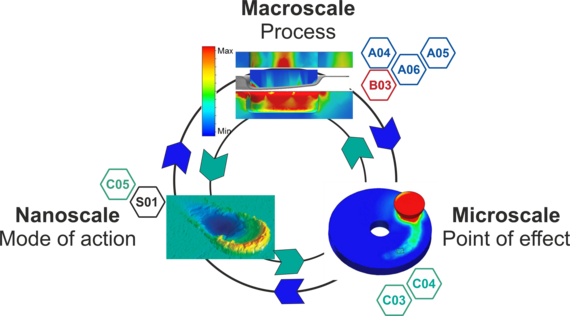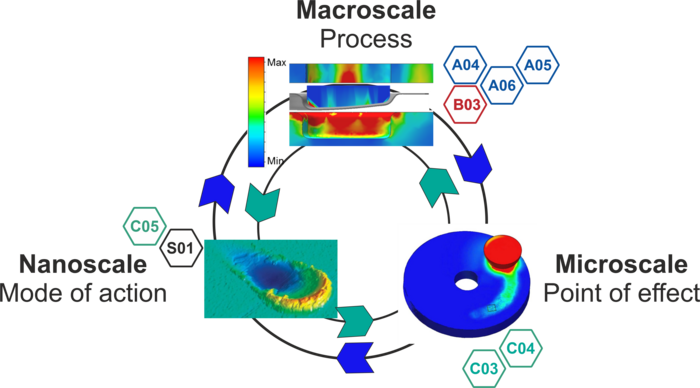Focus
Within the working group, an exchange of information about the tribological phenomena to be observed will first take place in order to gain a deeper understanding of the deviating friction and wear processes in an XHV-adequate atmosphere. In this context, the characterisation of tribologically relevant layers, which are generated in thermal processes of an oxygen-free process chain by the targeted addition of reactive gases, is supported. Due to the cross-scale investigation possibilities, macroscopic tribological effects can be simulated material- and energy-efficiently on a small scale, within the framework of model experiments, and thus be traced back to their causes. Furthermore, the scaling of the systems allows a much better control of the input and process variables, so that an identification and quantification of basic correlations is facilitated. The exchange is intended to create an understanding on which a common analytical wear model at the contact point in an oxygen-free atmosphere, valid for the entire CRC, will be developed.
In the future, the knowledge gained from the novel coating behaviour under XHV-adequate atmosphere will be used to establish novel coatings and thus provide tools for cooperating subprojects. In this context, materials such as SiC, DLC and Si3N4, which are subject to high wear under normal atmosphere, but have advantageous mechanical properties, are exemplary.



Assigned subprojects
Workgroup leader
Prof. Dr.-Ing. Marc Wurz
Phone
Fax
Email
Address
An der Universität 2
30823 Garbsen
30823 Garbsen
Address
An der Universität 2
30823 Garbsen
30823 Garbsen


